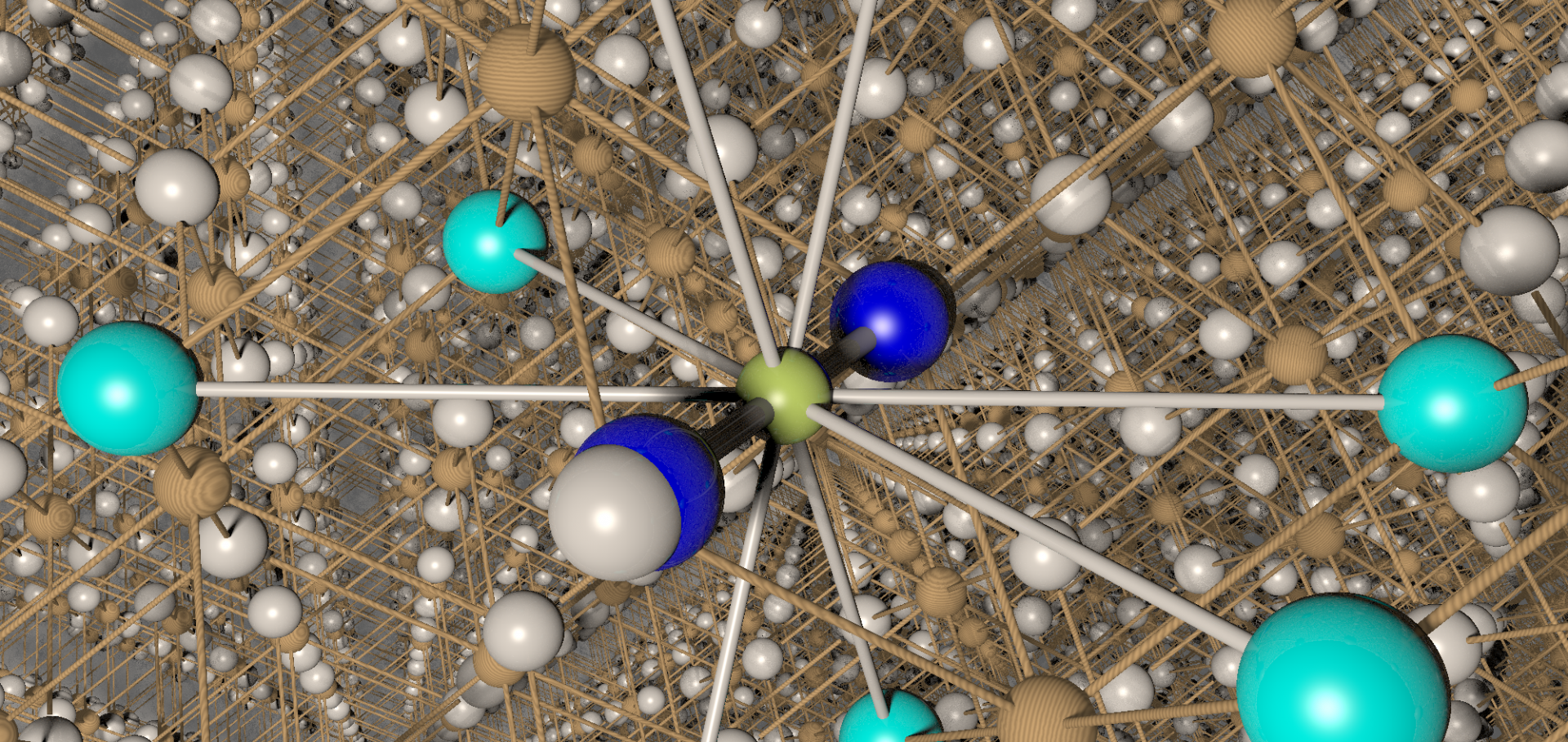Cobalt (II)-hydroxide terephthalate - a metamagnet with a large coercive field
SYNTHETIC MET 121:1-3 (2001) 1814-1815
Abstract:
We present the field dependent magnetization and magnetic susceptibility of an unusual metamagnet Co-2(OH)(2)(O2CC6H4CO2). It is characterized by a maximum in the susceptibility at the Neel temperature of 48 K and by spontaneous magnetization at a T-C of 43 K due to a small canting. It displays the characteristic kink of a metamagnetic transition in the field-dependent magnetization below T-N. Below T-C hysteresis is observed whose width increases to span +/- 5.2 T at 1.5 K. We propose a qualitative explanation of the rich phase behaviour.Magnetism in organic radical ion salts and complexes based on nitronyl nitroxide
SYNTHETIC MET 121:1-3 (2001) 1812-1813
Abstract:
Magnetic properties of purely organic radical ion salts and complexes based on nitronyl nitroxide (NN) derivatives were investigated. The salts and complexes are composed of N-alkylareniumyl NN as the radical cations and carboxylatoaryl, sulfonatoaryl and imidazolidyl NN as the radical anions. Tetracyanoquinodimethanide (TCNQ)(-) salts and complexes were also prepared. The results obtained for several complexes of a multifunctional molecule, 2-imidazoly NN (2-IMNN), are presented in detail, because 2-IMNN can be converted to various with p-carboxylatophenyl NN states by electron and proton transfers. The proton-transfer complex of 2-imidazoliniumyl NN (2-IMNN)(+*) with (p-CAPNN)(-*) shows magnetic behavior relevant to coexistence of intermolecular ferro- and antiferro-magnetic interactions. Several quinoliniumyl NN(QNNN)(+*)(p-CAPNN)(-*) complexes exhibit magnetic behavior similar to that observed in (2-IMNN)(+*)(p-CAPNN)(-*).Muon-spin relaxation study of charge carrier dynamics in the conducting polymer PPV
SYNTHETIC MET 119:1-3 (2001) 205-206
Abstract:
Muon-spin relaxation (mu SR) experiments on the conducting polymer poly(2,3-dibutoxy-1,4-phenylene vinylene) (DB-PPV) probe the dynamics of the highly mobile polarons created by the muon-implantation process in which muonium reacts with the polymer forming a radical state. The fluctuating spin density induced by the electronic spin defect rapidly diffusing up and down the chain leads to a characteristic relaxation, the temperature and field dependence of which permit the extraction of on-chain and inter-chain diffusion rates. These results provide information concerning: the charge-transport mechanism in DB-PPV.Numerical simulation of angle dependent magnetoresistances oscillations in alpha-(BEDT-TTF)(2)KHg(SCN)(4)
SYNTHETIC MET 120:1-3 (2001) 983-984
Abstract:
We present a numerical simulation of angle dependent magnetoresistances oscillations(AMROs) in alpha-(BEDT-TTF)(2)KHg(SCN)(4). The nesting vector of the density wave and the magnetic breakdowngap in the low-temperature, low-magnetic-field state (LTLF) are constrained by simulations of quasi-one-dimensional (Q1D) AMRO. Quasi-two-dimensional (Q2D) AMRO simulations for the high-temperature, high-magnetic-field state (HTHF) allow the precise derivation of an ellipticity of the Q2D Fermi surface. Simulations of the field dependent AMRO demonstrate the gradual evolution of the FS from LTLF to HTHF states toward the kink transition at 23 T.Numerical simulation of angle dependent magnetoresistances oscillations in α-(BEDT-TTF)2KHg(SCN)4
Synthetic Metals 120:1-3 (2001) 983-984


